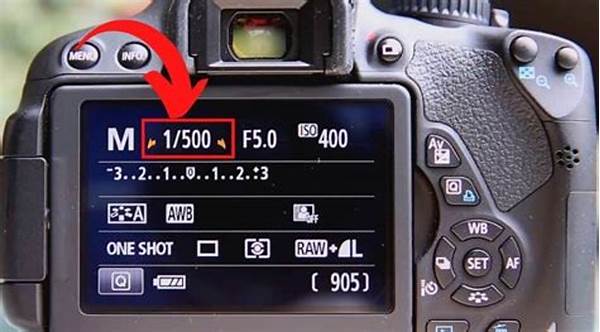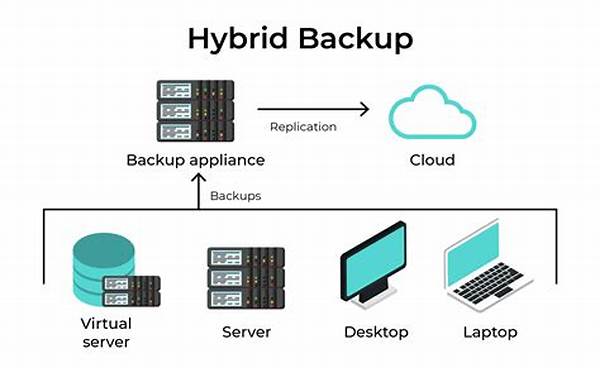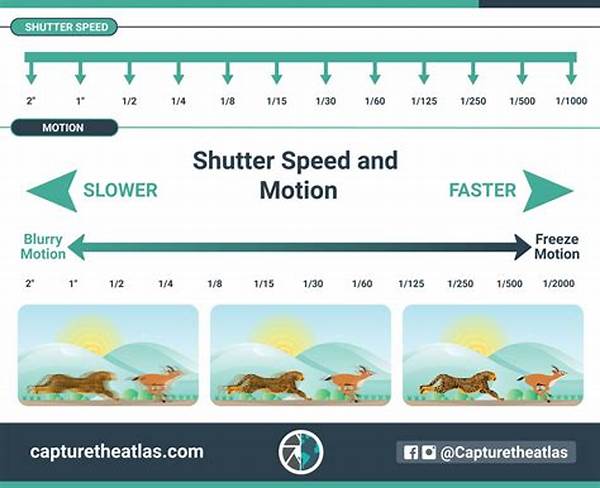Hey there, budding photographers! If you’re here, you’re probably curious about one of the most crucial aspects of photography: shutter speed. Think of it as the gatekeeper to those oh-so-important light photons charging through your camera’s lens. But don’t sweat it if you’re new; we’ve all been there, and mastering shutter speed is a journey, not a sprint. In this post, we’ll break down the nuts and bolts of shutter speed control for beginners with some friendly tips and tricks to get you snapping like a pro.
Read Now : Diy Home Photo Shoot Inspiration
Understanding Shutter Speed Control
Shutter speed, in simple terms, is the length of time your camera’s shutter stays open to let light in. Think of it like blinking; a slow blink allows more light, just as a slow shutter speed does. For beginners, shutter speed control is vital because it directly affects how movement is captured in your photos. A faster shutter speed will “freeze” action, making it perfect for sports or wildlife photography. On the flip side, a slower shutter speed can introduce blur, either intentional, like in water motion shots, or unintentional if there’s camera shake. By grasping the basics of shutter speed control for beginners, you can experiment and discover what styles resonate with your personal taste. Plus, mastering this skill will boost your confidence as you dive deeper into the world of photography.
To start with, set your camera to Shutter Priority Mode, usually marked as ‘S’ or ‘Tv’ on most DSLRs and mirrorless cameras. This setting lets you select your desired shutter speed while the camera automatically adjusts the aperture. Once you get comfortable, try Manual Mode and see how shutter speed interacts with aperture and ISO to influence exposure. The beauty of shutter speed control for beginners lies in its potential to unlock creativity. Whether you’re tilting your lens towards serene landscapes or fast-paced action, understanding shutter speed helps you tell your story through each frame. Remember, practice makes perfect; get out there and start shooting!
Quick Tips for Shutter Speed Control
1. Start with the basics: Experiment with different shutter speeds to see how they affect your photos. Fast shutter speeds are great for freezing motion, while slow ones capture movement.
2. Use a tripod: For beginners learning shutter speed control, a tripod is your best friend to avoid blurry images from handshakes during long exposures.
3. Capture movement: Practice with water fountains or busy streets to learn how shutter speed control for beginners affects motion blur.
4. Play with light: Shutter speed control for beginners can be fun! Use slow speeds at night to capture light trails.
5. Don’t fear manual mode: Dive into manual; this is where you learn the most about shutter speed’s impact on exposure.
How Shutter Speed Affects Your Photos
When diving into shutter speed control for beginners, you’ll quickly learn how powerful this setting is in shaping your photographs. If you’ve ever admired the silky water effect in waterfall photos or the pin-sharp images of a bird in flight, thank shutter speed. With a speedy setting, you can capture split-second action without blurs, ideal for sporting events or wildlife encounters. On the other hand, slow down that shutter, and you can create dreamy, artistic effects in your landscapes or city scenes.
One key aspect is capturing light and movement. Take snaps at different speeds and scrutinize the results—both the successes and failures. For instance, slower speeds at night let in more light and can create stunning light trails from cars. Think of shutter speed control for beginners as the doorway to creativity in capturing light and motion. The more you play around, the more you’ll appreciate this aspect of photography. So go on, unleash your inner artist!
Practical Applications of Shutter Speed Control
1. Portraits: A moderate shutter speed captures fine details while avoiding motion blur, perfect for crisp, clear images.
2. Sports Events: Use fast shutter speeds to freeze athletes in action, preventing motion blur despite rapid movement.
3. Night Photography: Slow shutter speeds capture more light, revealing stars or city lights beautifully.
4. Waterfalls: For that dreamy, silky water effect, slow the shutter speed and stabilize your camera with a tripod.
5. Architecture: A steady hand or tripod combined with slower speeds can capture intricate details smoothly.
Read Now : Improving Your Street Photography Skills Insightfully
6. Wildlife: High shutter speeds freeze even the swiftest of creatures in motion.
7. Light Trails: Capture moving car lights at dusk with longer exposures for creative results.
8. Daylight Landscapes: Balanced shutter speeds capture vivid scenery without blur.
9. Macro: Fast speeds ensure no details are lost due to slight movements during close-ups.
10. Panning: Follow a moving subject while using a slow shutter speed for a dynamic, motion-blurred background.
Exploring Shutter Speed Techniques
Understanding and using shutter speed opens up a world of possibilities for beginners in photography. By practicing different techniques, you can better capture your desired atmosphere in each shot.
First up, it’s essential to experiment. Go out and play with various shutter speeds to see firsthand how they affect the images you capture. Don’t just rely on theory; experiencing it is the best teacher. Are you aiming to catch crisp images of toddlers on the move or dancers mid-jump? Increase your shutter speed! As you advance, you’ll find comfort in adjusting the settings based on what you want to achieve with the photograph.
Another important technique is panning. Follow a moving subject with your camera while using a slower shutter speed. The result? A sharp subject against a motion-blurred background, creating a sense of speed and action. This technique makes your images dynamic and can turn an ordinary scene into something extraordinary. The secret to mastering shutter speed control for beginners is simple: keep shooting and learning.
Mastering the Lingo: Understanding Speed
Alright, folks! Time to chat about shutter speed lingo without the dull textbook talk. If you’re new, “speed” ain’t just about how fast you switch your TV channels. It’s the bread and butter of snapping killer shots. Shutter speed control for beginners might sound geeky, but it’s more like choosing whether you want your milkshake sippable or spoon-needy.
Light is the star of the show here. A quick shutter means less time for light to peek through, meaning crispy images with zero blur. But for those avant-garde blurry night shots? Slow it down, buddy! Grab a stable hand or tripod, and watch your creativity flourish. So, why does this matter? Simple: controlling the story the way you want it captured. Now, grab your camera and test out the magic of shutter speed!
Summarizing Shutter Speed Mastery
In a nutshell, mastering shutter speed control for beginners is all about uncovering the potential locked in your camera settings. By experimenting with fast and slow speeds, you can capture every moment, from a giggle-fit freeze-frame to a cascade of silky water. As you fiddle and explore, keep in mind that practice is your ally in this rhythm of snapping shots.
Don’t shy away from moving past the tutorial stage. You’ll learn the balance between light and movement, and eventually, the language of your camera becomes second nature. As you hone your skills, the understanding of shutter speed control for beginners will evolve, fueling your artistry and storytelling. Before you know it, you’ll wield your camera with expertise, capturing life’s delightful, intricate moments uniquely your own. So, here’s to the adventure of chasing that perfect shot!



